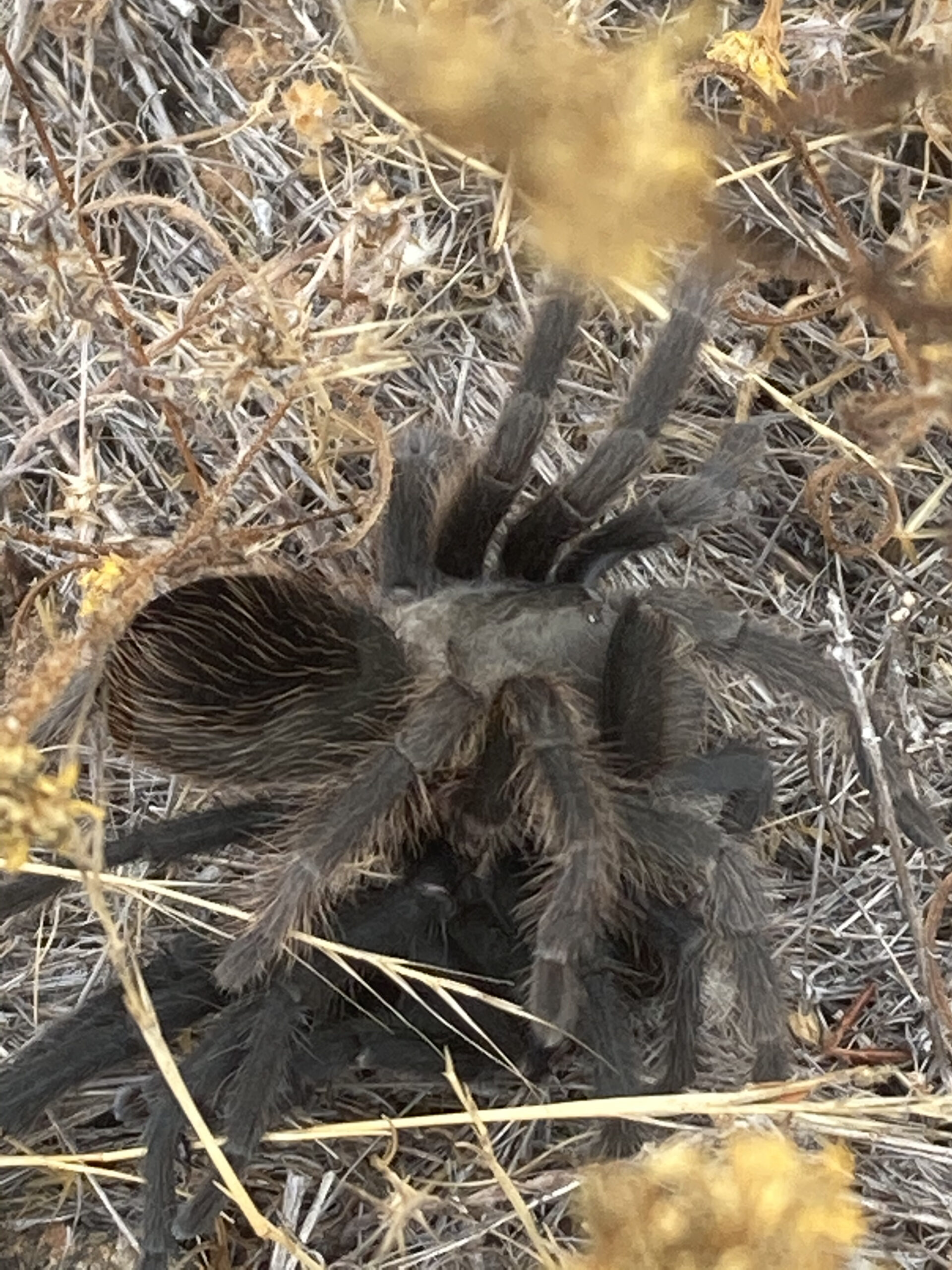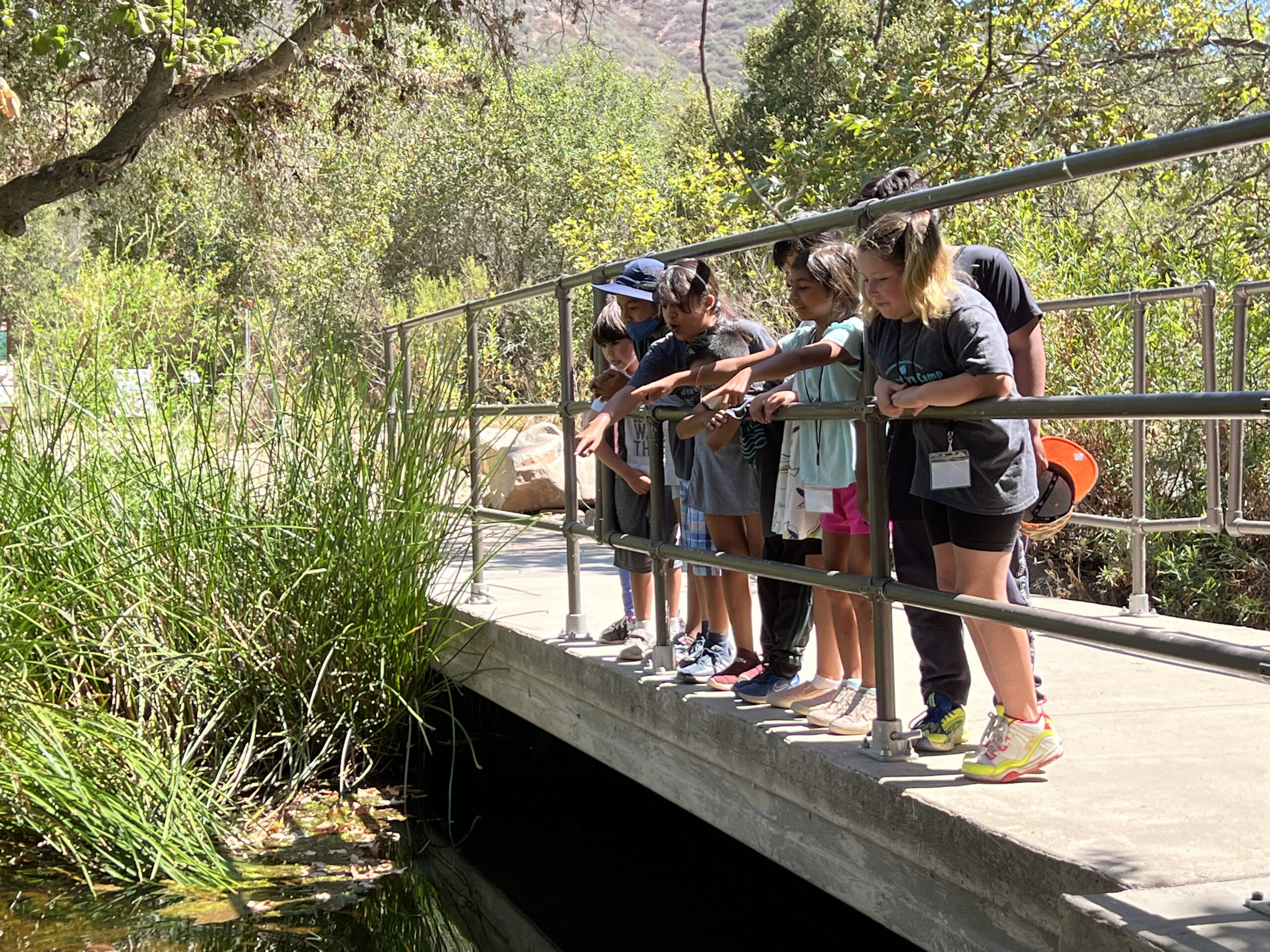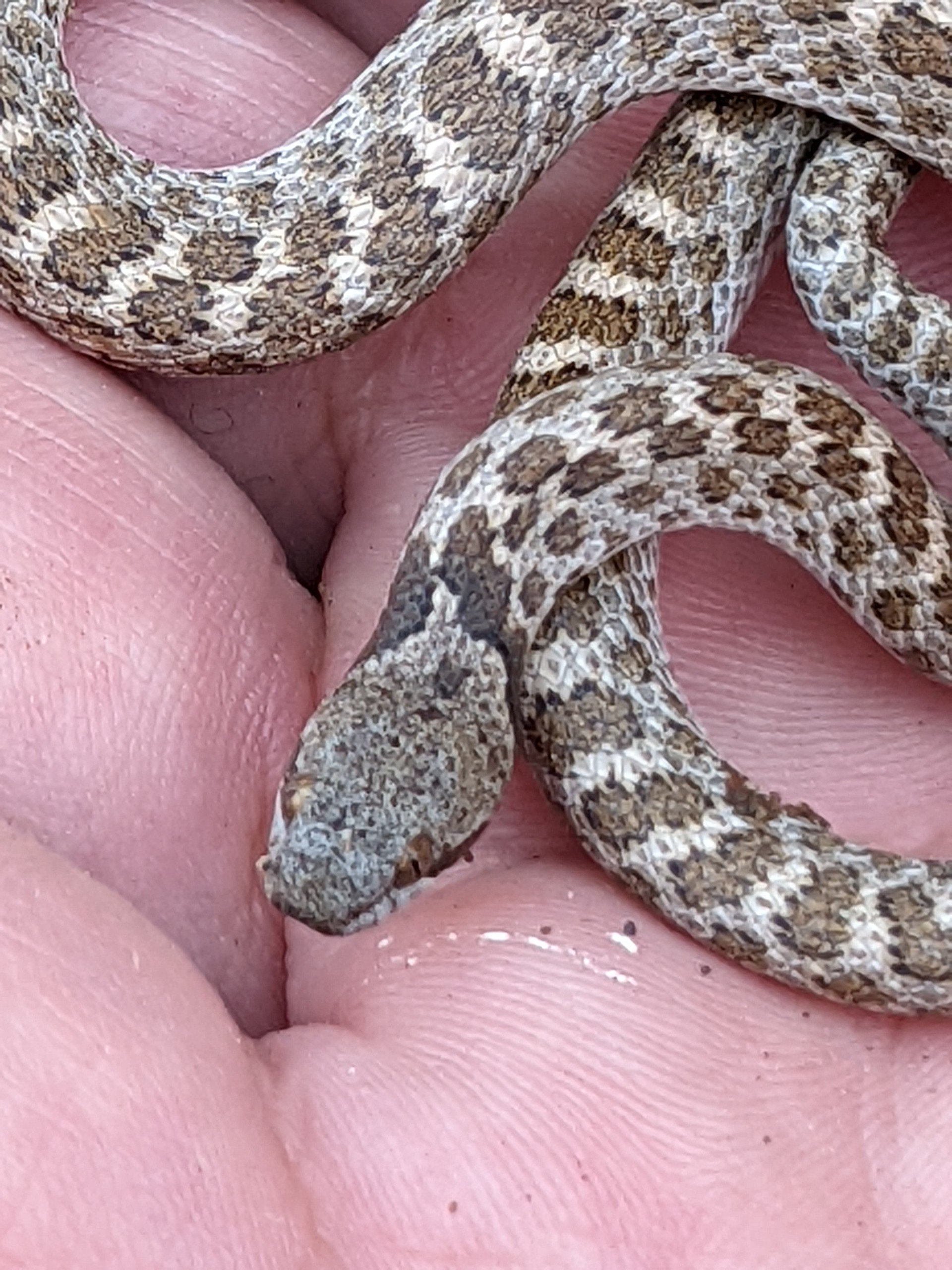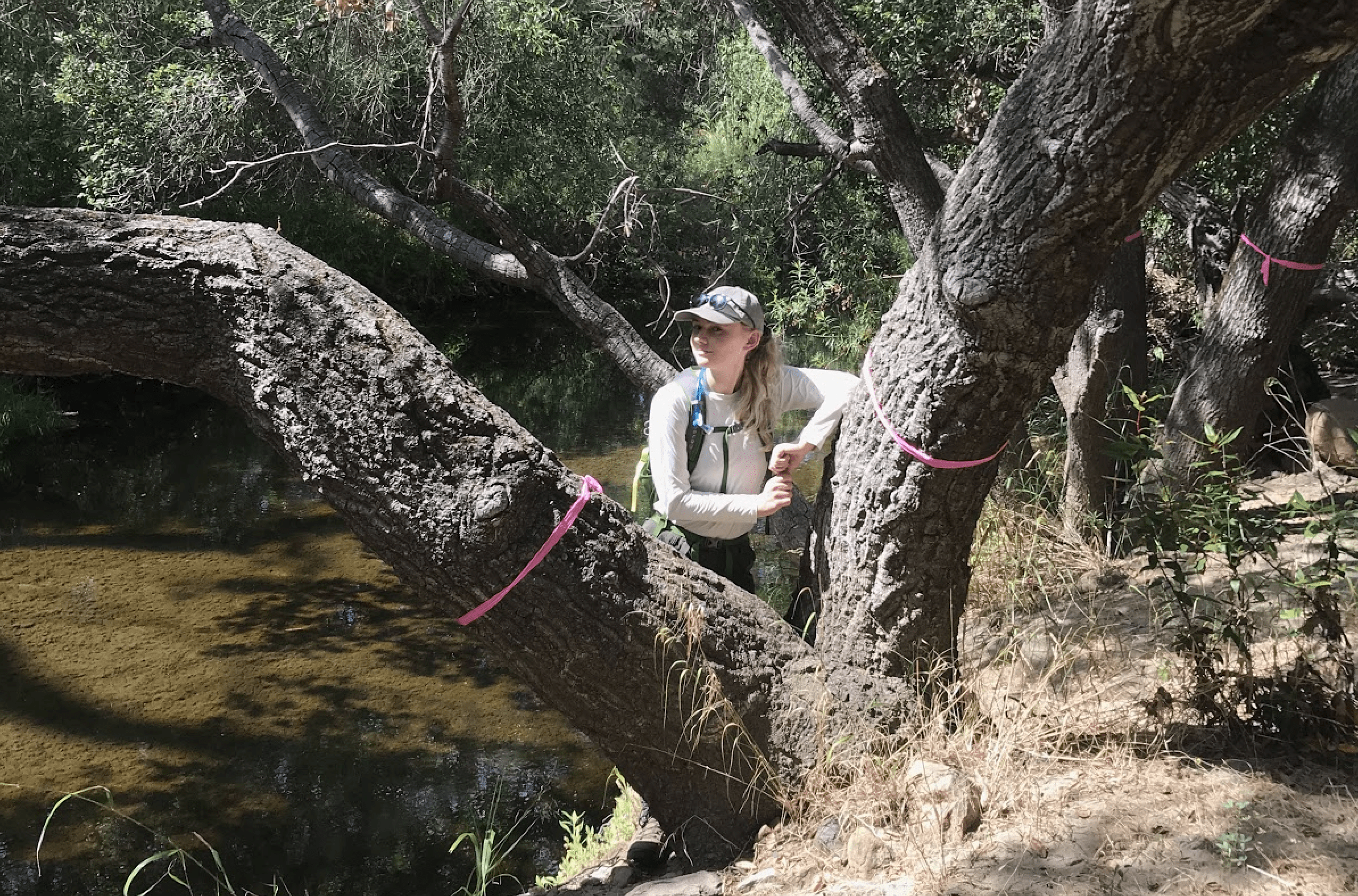
Why Are Oak Trees Wearing Pink Ribbons?
by Rose Wilkinson & Lissa Schroeder
If you’ve been hiking near Elfin Forest, you may have noticed our oak trees have some pink ribbon around them. No, they aren’t streamers leftover from Isabella the deer’s birthday party! They are actually there to help with our conservation efforts. Our newest interns, Rose and Lissa, have been doing an in-depth coast live oak survey, to determine how many trees are infested with the gold spotted oak borer. The majority of their surveying has taken place at the Keithley Preserve, right down the road from the Elfin Forest Recreational Reserve. Each day, Lissa and Rose examine each oak tree for signs of infestation, which includes small D-shaped holes, bark staining, and an overall unhealthy canopy. Each tree is tagged with pink tape and the data is collected into an application, where it is further studied by the Escondido Creek Conservancy land team to determine where infestation hot spots are occurring. Fortunately, the interns have found very few trees that have been infested by the gold spotted oak borer. 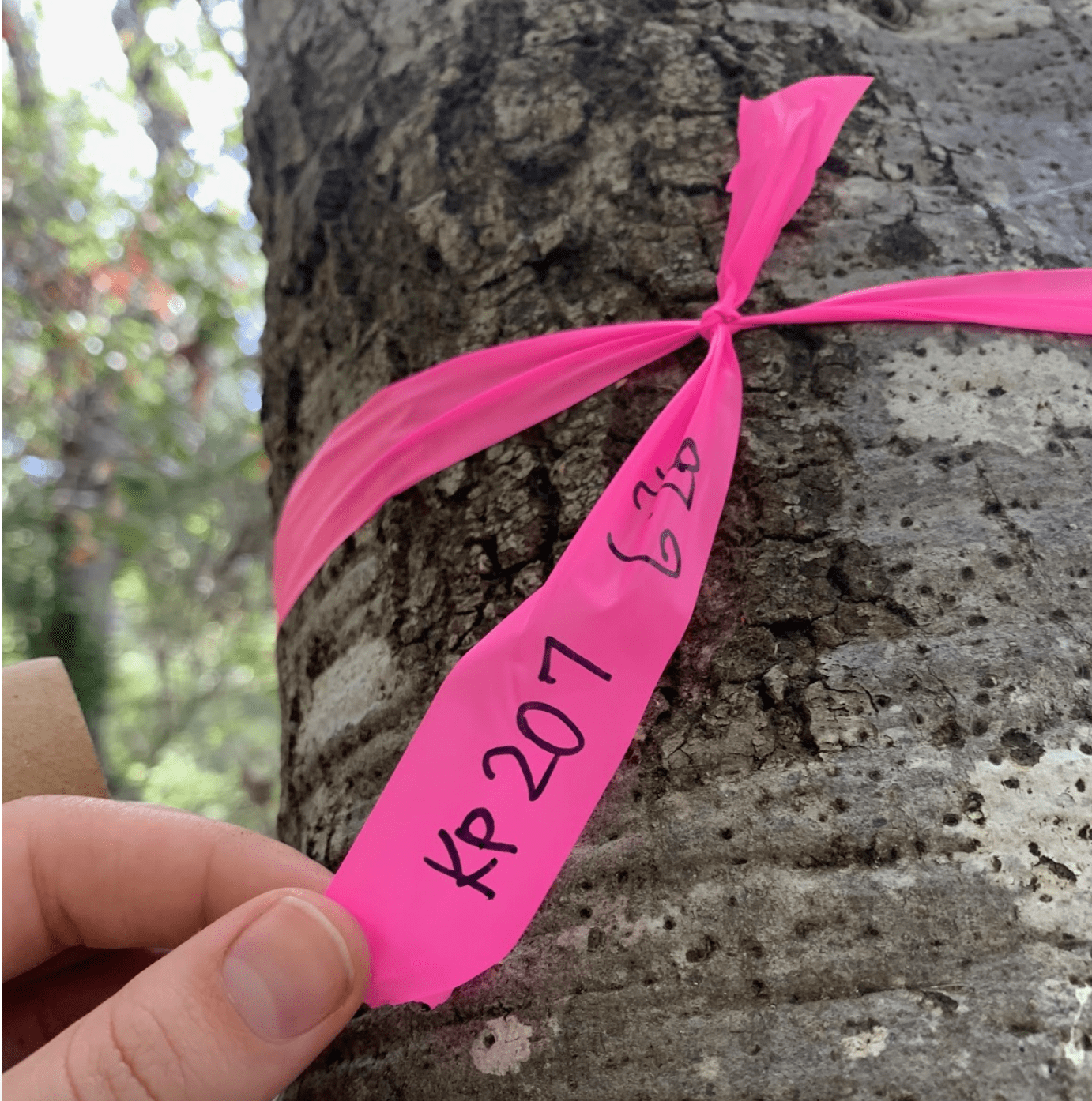
Rose, a biology major at Willamette University in Salem, Oregon is excited to be out in the field this summer: “Fieldwork has always been the goal for me, and being able to work outside under the oaks and discover new things every day is a dream come true. Southern California is an amazing biodiversity hotspot, and I feel so privileged to be able to work with the Conservancy’s amazing land management team and learn about the ins and outs of monitoring and invasive pest control. I’ve also developed a new fascination with insects after encountering amazing amounts of different species every day in the field, something I never would have expected from myself!”
The gold spotted oak borer beetle, Agrilus auroguttatus, is an invasive beetle native to SE Arizona, and it has been contributing to the ongoing oak tree mortality occurring in San Diego native oaks. Since the early 2000s, gold spotted oak borer (GSOB) infestation has been a major factor in the death of over 80,000 oak trees over almost 5000km2 of Southern California oak woodlands. The death of this many trees is associated with a massive economic cost, as well as a significant impact on biodiversity, since oaks are a keystone species in Southern California. Dead oaks reduce the availability of habitat, shade, and food, as well as create fuel for wildfires.
Lissa and Rose have also been assisting the Land Management Team with seed collection. Plants such as black sage, white sage and deer weed are all dropping seeds this time of year. The seeds collected will be used for restoration plots, and planting more native plants in areas where invasive species have taken over. Lissa, an Environmental Management and Protection major at California Polytechnic State University San Luis Obispo explained, “It’s been great getting to work outside everyday and explore many of San Diego’s beautiful open spaces. Working with The Escondido Creek Conservancy has taught me much more than I could ever learn in a classroom, from how to collect seeds for certain plants, to how to best manage our open spaces and protect our natural resources.”
 Summer Interns, Rose & Lissa pose for their socially-distanced group photo.
Summer Interns, Rose & Lissa pose for their socially-distanced group photo.
To learn more about GSOB and what you can do to identify an infestation, visit UC Riverside’s Center for Invasive Species Research page on GSOB. https://cisr.ucr.edu/invasive-species/goldspotted-oak-borer


